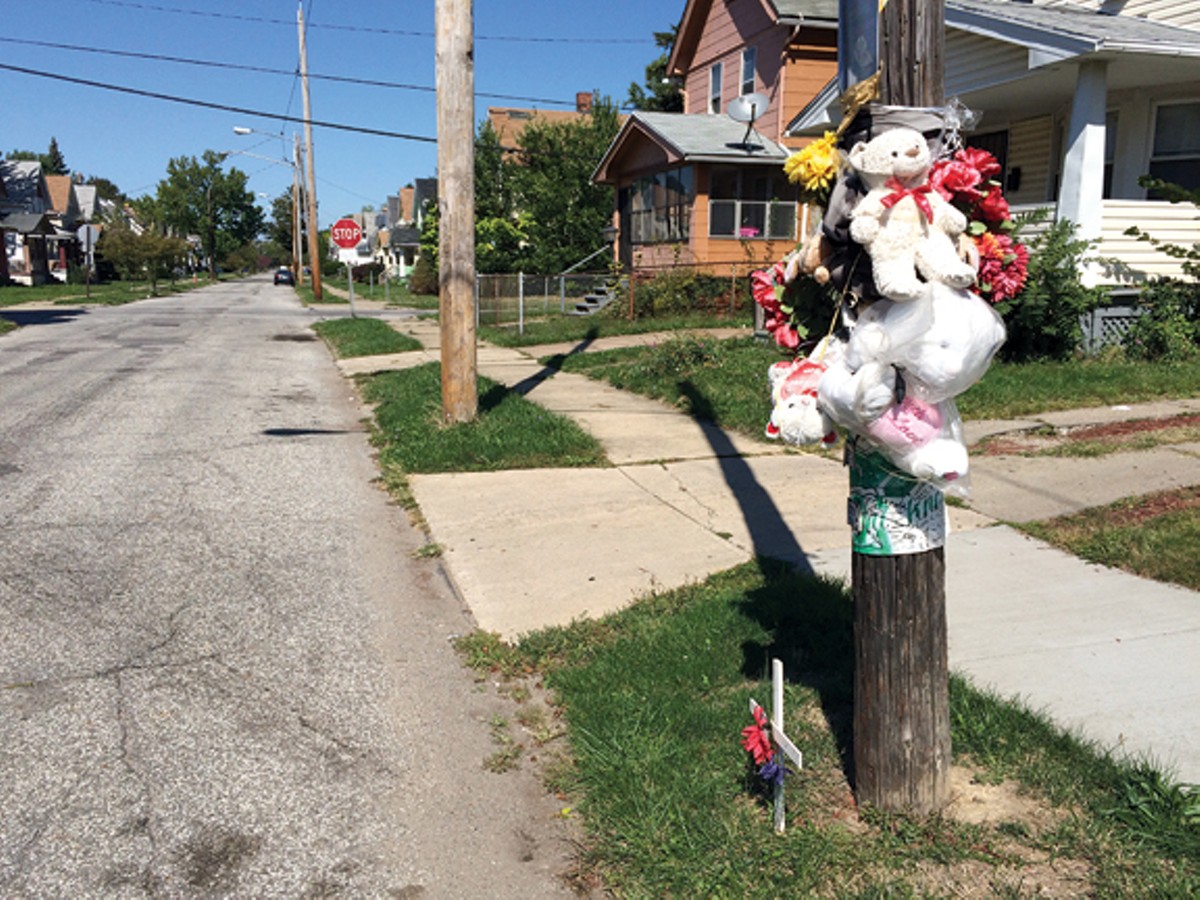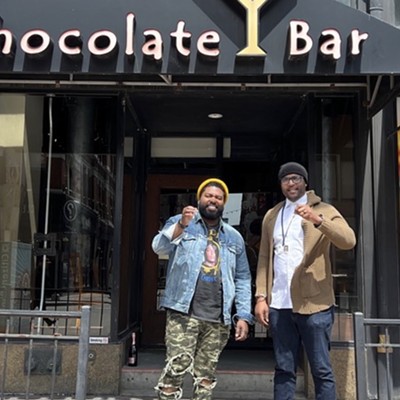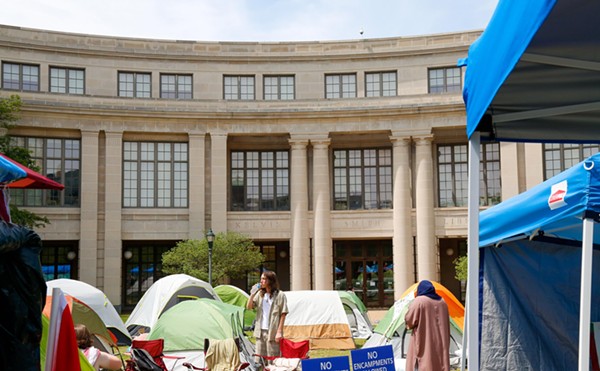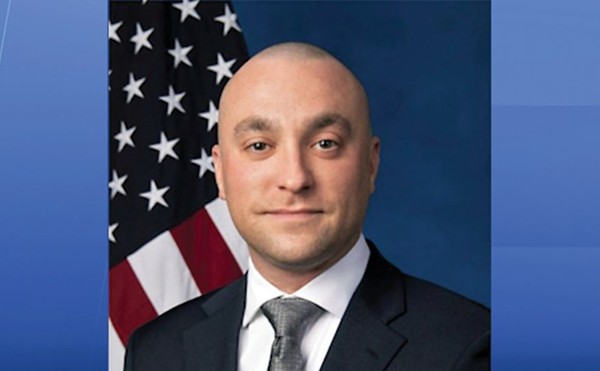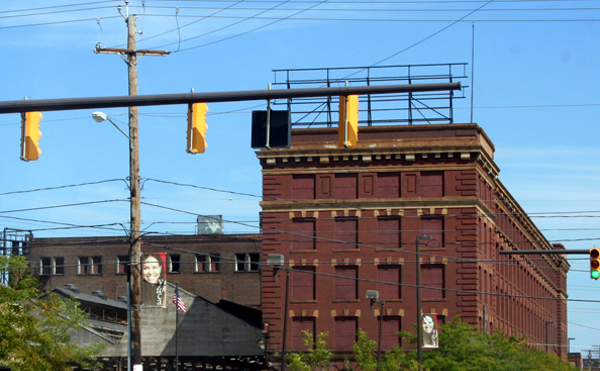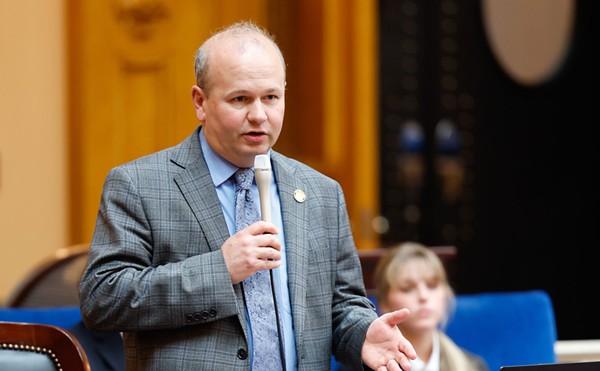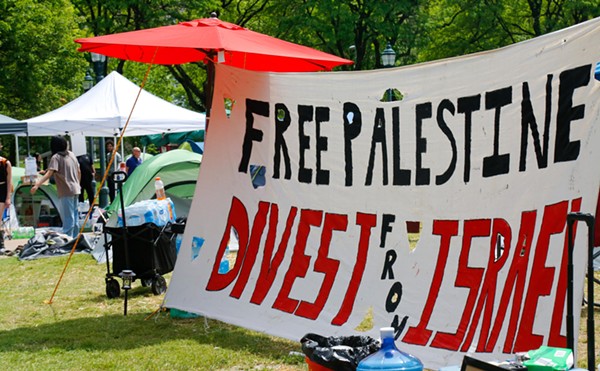A crowd gathers slowly around a utility pole on East 113th Street in Cleveland. Young and old, they bring balloons and stuffed animals, candles and memories. A child no older than 6 hoists a poster onto the ragged roadside pine. Bedecked with photos of his uncle, the poster reads: "Do It 4 Deck."
Today's gathering is a neighborhood coming up for air. Besieged by new waves of violence and an increasing homicide rate, Cleveland's eastside streets are frequent datelines in Plain Dealer crime stories even as they remain far from the commercially minded downtown consciousness. We may as well be talking about Aleppo. Today, these residents collectively exhale, as they have before, as they will again: In just 24 hours, another crowd will form down the road, where 5-month-old Aavielle Wakefield will take her last breaths amid gunfire.
Dexter "Deck" Mangham was shot and killed Sept. 27 downtown, where Euclid Avenue meets East Fourth Street. It was another tragedy, and a rare blast of violence invading Cleveland's most recognizable street -- the one anchored by Michael Symon, the one lauded by the Wall Street Journal and other national publications championing Cleveland as a tourist destination.
The police are saying that men associated with a rival gang fired bullets into a crowd that night around 2 a.m., killing Deck and injuring several others. Those men reportedly went on to kill 19-year-old Sidney Smith -- an innocent sister of a gang member -- on the eastside later that night after pumping 31 bullets into her house. Two men have thus far been arrested.
Deck's friends and family have gathered this late September evening, in the neighborhood where he lived, to remember him. A crowd of more than 100 coalesces into a loose circle as the sun hangs low over two-story homes. Candles are lit. Small cut-out letters are arranged to spell "RIP DECK." The utility pole has taken on new life as Deck passes out of this one, turned into a makeshift memorial totem.
"That's my uncle, and I love him," says one little boy.
Then, on the count of three, the gathered crowd releases heart-shaped balloons into Cleveland's fading sunlight. The wind catches many of them, tossing them into a nearby tree where they get stuck. The crowd laughs. There's not much else to do.
"Deck's just hanging out, like he always was," says one friend.
It's a light hearted moment that belies a serious situation.
Police say the Benham Boyz and 103 Murda Block have been waging a months-long gang battle against each other, trading drive-bys where targets and innocent bystanders have ended up in pools of blood. (Deck was associated with the Benham Boyz, according to those in the neighborhood.)
Judy Martin led the group in prayer before the balloon release. She attends vigils like this every time someone is killed in the city, as the director of Survivors/Victims of Tragedy, a local group that memorializes victims like Deck. She's got intimate knowledge of burying a loved one -- her own son was shot and killed in 1994. She's seen plenty more since then. And the tragedies she lives with aren't stopping, nor are they slowing down. In the two weeks since Deck's murder, four more people were killed in Cleveland, fresh data points clustered too often like flies around the core of Mount Pleasant. (The westside is far from immune, though. On Oct. 6, 68-year-old Clarence Adkins was stabbed to death on Colgate Avenue, bringing the city's homicide total to 101 for the year. For reference, last year saw 102 homicides; in 2013, 88; in 2012, 99; in 2011, 75; in 2010, 72.)
"The vengeance and the revenge and the anger: That all keeps on going," Martin tells Scene. "And until they hit Dexter, they all missed their targets."
Martin is talking about a spate of innocent children being gunned down across the city's eastside as the city's gang violence escalates, the most sickening entries into the city's climbing homicide tally. A few weeks earlier, 3-year-old Major Howard was shot and killed just up the road here on East 113th. A week before that, it was 5-year-old Ramon Burnett on a quiet side street off East 55th. And soon enough: little Aavielle Wakefield, all of 5 months, over on East 143rd on Oct. 1.
If you were to visit East 113th north of Union Avenue, you'd find a memorial to Major Howard that looks much like the memorial to Deck just a block away. Balloons and stuffed animals and posters. Take a 10-minute drive around a 10-block radius, and you'd find many more. It's a startling sight.
They're omnipresent, these memorials, both easy to gloss over and impossible to miss once you're looking. They sprout up on corners and sidewalks, spontaneous and deliberate manifestations of grief and remembrance, balm for each fresh scar on the neighborhood. They're certainly not unique to Mount Pleasant, but in other corners of Northeast Ohio, and particularly in the suburbs, memorials tend to signify the site of fatal prom-night car crashes and the like. Here, that's rarely the case. Here, they're usually tied to gun violence. Here, they represent homicides.
Here, you drive around and can't help but think about what Cleveland Police Chief Calvin Williams would go on to say amid tears on the night little Wakefield was killed: "This shouldn't be happening in our city."
Just nine blocks away from Deck's memorial on East 113th is the memorial for Javon Alexander, who was killed back in February.
White and blue balloons still flutter peacefully amid Indian Summer wind, casting oblong shadows on the cracked sidewalk of East 104th Street where Alexander took a single bullet to his head. Freshly purchased stuffed animals and Sharpie-scribbled notes from friends cling to yet another utility pole. These sites tend to be well maintained by the victims' loved ones.
It was around 5:30 a.m. when Alexander died, and the sun had yet to crack the February horizon when gunfire ripped apart the street. According to news stories at the time, a woman ran out of her home and shouted, "My baby, my baby." He was only 18.
Back in the winter, Alexander's death didn't get much attention. There was no context. It was too early for the powers-that-be to guess that the city's homicide rate would balloon to triple digits with ease. The public at the time was mired in a heated debate over police officers' use of force in the deaths of Tamir Rice and Tanisha Anderson. No one was running news stories about gang warfare and black-on-black crime.
But City Councilman Zack Reed has urged the city to take action for years. "We can't be shocked," he tells Scene during a recent trip to Deck's neighborhood, Alexander's neighborhood, his own neighborhood. Reed has slapped the administration with demands to take this problem seriously, to understand the deeper civic meaning of these memorials to the city's fallen.
Things are different now. It's taken awhile for the stories to gain traction, for the summer of violence and bloodshed to lead the evening news and land on the front page. Sadly, it's taken the deaths of three children under the age of 5 to bring us here, to that conversation, to the point where the mayor and police chief call press conferences and visit crime scenes as routinely as big-business ribbon-cuttings spring up downtown.

